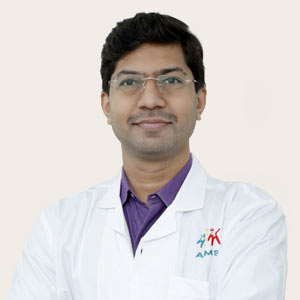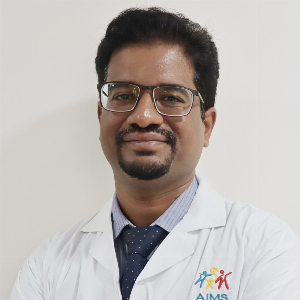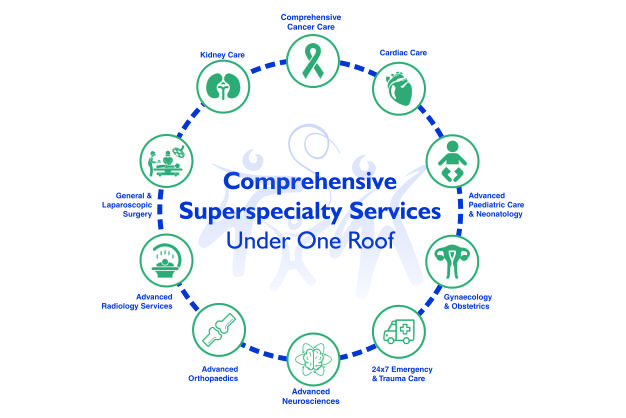Overview
Many sight-threatening diseases if detected early can be cured or treated to prevent or slow the progression of serious vision loss.

The most important step in preventing visual loss is by routine examination of eyes by a qualified eye care professional. Children should receive their first comprehensive eye examination before the age of four unless problems warrant an earlier examination. Persons of age group 20 to 40 should have an eye examination every five years, 40 to 60 every two years, and after 60 every year if there are no visual problems. Immediate care is required if there is visual change, pain, flashes of light, new floaters, injury or tearing, etc.
Persons with diabetes are at greater risk for several eye disorders including diabetic retinopathy, glaucoma, and cataract, and should have an eye examination every year or as per their doctor’s advice. Asians are more at risk of glaucoma and should have regular check-ups after 40 years of age especially with a positive family history of glaucoma.
Here at AIMS Hospital, we are committed to providing the highest quality of ‘Eye Care’ as per international standards. We aim to combine cutting-edge technology with professional expertise, compassion, and dignity to deliver the best results. The team offers superlative care and treatment for all aged patients for diseases such as glaucoma, cataract, age-related macular degeneration, diabetic retinopathy, to name a few. The team provides expert consultation, accurate and early diagnosis, and management of various problems affecting the eyes. The department is well designed to render a comprehensive range of surgical and medical eye care for preservation, protection, restoration, and enhancement of vision for all aged patients.
Cataract
What is a Cataract? 
The normal human crystalline lens is clear and transparent like glass. Whenever this lens becomes cloudy or develops opacity it is called a ‘cataract’. This blocks the light rays from passing through the lens and a blurry image is formed. The patient feels as if he or she is looking through a frosted/fogged glass. This blurring keeps increasing and eventually all vision is blocked when a cataract becomes mature.
What are the symptoms of developing a cataract?
The most common symptom of cataracts is progressive, painless blurring of vision in one or both eyes. Many people notice that objects look yellow, hazy, or distorted. They may see double or multiple images. Also, there can be increased glare, haloes from oncoming lights, and night driving may become tricky. Others notice an improvement in near vision or frequent changes in their glass prescription.
Cataract Surgery
A cataract is a clouding lens that affects vision. It is the most common eye disease amongst elderly people and is a major cause of visual impairment and blindness worldwide. In India, 3.8 million cataract cases add per year to the already existing backlog of cataract cases. Cataract procedure is the most common surgical procedure performed in the population aged over 60.
Is Cataract surgery safe?
Cataract surgery is a highly successful procedure (95-98% success rate) technically. However, the final visual outcome also depends on the condition of the eye i.e. cornea, retina, optic nerve, any pre-existing disease, amblyopia (lazy eye), etc.
Sometimes it may be difficult to diagnose these abnormalities before the surgery due to cataracts and we can know about it only after the operation. No surgeon in the world can perform a surgery with guaranteed results. However, almost all the patients regain good vision following cataract surgery.
Child Eye Care
Among various child health issues that parents are most concerned with, eyes and vision rank near the top. Good vision is essential for proper physical development and educational progress in children.
Vision problems affect one in twenty preschoolers and one in four schoolchildren in America. Since many vision problems can be cured or prevented if diagnosed early, it is important for children to receive proper eye care at the right time.
Understanding Normal Vision
The visual system in young children is not fully mature. The brain centers and visual pathways need clear images from both eyes to develop normally. If the image from one eye or both eyes is blurred because of any reason (glass number, cataract, squint or retinal problems, etc.), it can result in permanent damage to vision. Normal pathways for vision evolve till 7-8 years of age.
Common Childhood Problems
Common problems seen in children are Amblyopia or “lazy eyes” “squinting” or “wandering” eyes, vision problems, eye infections, and injuries. These can be prevented by early vision screening as suggested by The American Academy of Pediatric Ophthalmology and Strabismus and The American Academy of Family Physicians and The American Academy of Pediatrics.
Child’s Visuals Milestones
- At Birth: Babies see in black and white and shades of gray. They can focus only at the distance of 8 to 12 inches and most of their vision is blurred.
- 1-2 months: Infants start to follow objects by moving the head and prefer objects with sharp contrast like checkered patterns.
- 2-4 months: Eyes that were wandering start to see in tandem and start appreciating colored objects.
- 4-6 months: They learn to fuse images from both eyes resulting in better depth perception, learn hand-eye coordination, able to locate and hold objects. Vision is near 20/20 now.
- 6-12 months: They learn finer coordination, spatial arrangement, tracking of fine moving objects.
- Toddlers and preschoolers: The higher centers in the brain keep maturing and evolving.
Glaucoma
Overview:
Glaucoma describes a whole group of diseases affecting the eye, but all share the common fact that they cause the pressure within the eye (intraocular pressure) to increase to unhealthy levels in the affected person. Most types of glaucoma are chronic and are present for the patient’s lifetime. Some types of glaucoma occur suddenly, but most develop slowly, over months or years. Appropriate treatment for glaucoma will prevent loss of sight in the majority of patients whose condition is detected early.
 What Is Glaucoma?
What Is Glaucoma?
In normal eyes, a clear transparent fluid called Aqueous humor is secreted inside the eye and continuously drained via microscopic outflow channels into the blood circulation. If this outflow of fluid is blocked due to any reason, the pressure inside the eye builds up and causes damage to the eye. Glaucoma is a spectrum of diseases where the optic nerve is damaged most commonly due to increasing in intraocular pressure.
How does Glaucoma affect the eyes?
The normal human eye functions like a camera. When we look at any object the image falls on the neurosensory retina and is carried to the brain via the optic nerve. The optic nerve is like an electrical cable with more than a million wires. An increase in intraocular pressure damages these wires (optic nerve fibers) causing their death, resulting in blind spots in the field of vision. When the disease is advanced, it can cause total blindness.
Services Offered
The skilled team of ophthalmologists delivers high-quality eye care related services which include the following:
- Comprehensive Eye Check-up
- Premium Cataract Surgery
- LASIK & Refractive Surgery
- Retina & Uvea- Laser
- Pediatric Ophthalmology & Squint
- Neuro-Ophthalmology
- Glaucoma Surgery
- Cornea Transplant
- Oculoplasty (Botox & Fillers)
- Eye Infections, Trauma and Emergencies
- Artificial Eye & Prosthesis
- Contact Lens Clinic
Specialists

DR. SANKET NIRGUDE
Ophthalmologist, Retina & Comprehensive Eye Surgeon
MS (Ophth), FCPS, FICO (Lond-Merit), DNB, MNAMS, MCh. (USA),ICLEP, MRCS (Edin), FAICO
View details
Appointment

DR. PRASHANT MURHE
Ophthalmologist, Cataract, Refractive Squint & Child Eye Specialist
MS (Ophthal) , FRCS, Fellowship in PAEDIATRIC OPHTHALMOLGY AND STRABISMUS,ICO
View details
Appointment
ABOUT US
About AIMSDirector's Message
Vision & Mission
Accreditations
Awards & Accolades
Our Network
Phone Directory
Designed by Web Creations 2022. All rights reserved.










